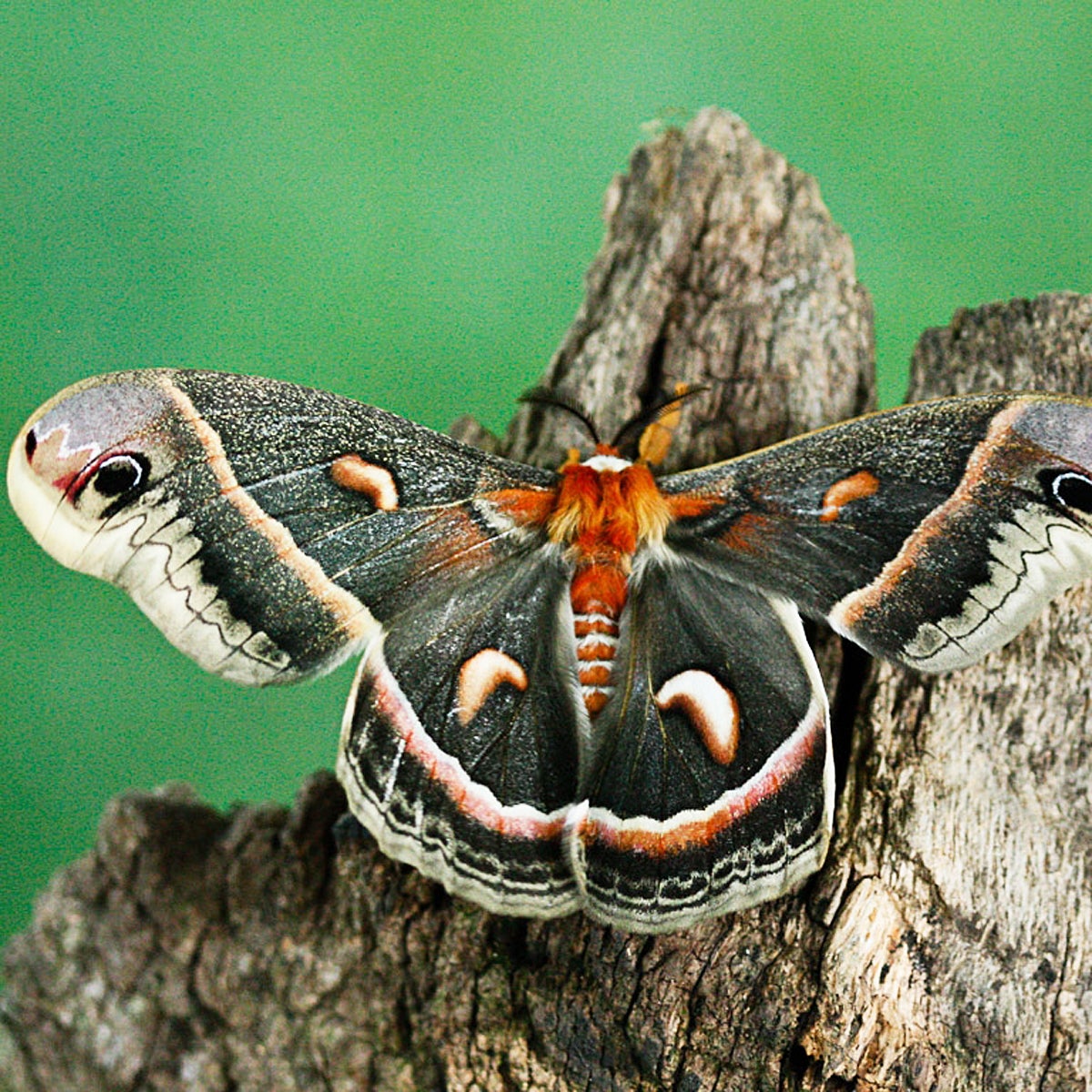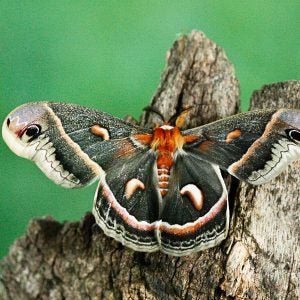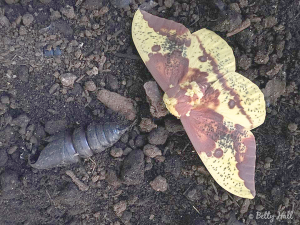Nighttime in the garden
Published 3:08 pm Monday, October 24, 2016

- The cecropia moth is North America’s largest native moth, with a wingspan up to 6 inches. The cecropia has no mouth and does not feed. It eats only as a caterpillar and lives its brief adult life solely to reproduce. Note the feathery antennae. Leaving outdoor lights on at night can be detrimental to cecropia moths. (Betty Hall Photography)
By Susan Jonas
Garden Club of Danville
My dog and cat know more about what happens in the garden at night than I do. The dog’s keen sense of smell and the cat’s night vision make them privy to secret visitors I’ll never know. Our gardens don’t shut down when the sun sets. Half of all life on earth begins activity after sundown. As the familiar daytime animals go to sleep, a new batch of night creatures emerges. Katydids, moths, and beetles join the rodents, raccoons, and possums on their nightly prowls. Predators such as foxes, snakes, owls, and bats begin their nocturnal hunting. The insects, including moths, are food for everything higher in the food chain.

Activity in your garden doesn’t stop when you go to sleep. Half of all animals on earth begin their activities when the sun sets. Cats, both domestic and feral, are among the nocturnal predators that prowl through your garden in the dark. (Photo by Susan Jonas)
Last summer the Garden Club visited the native plant garden of Betty Hall, nature photographer and butterfly expert. Betty’s latest interest is moths and she’s been raising them from eggs and caterpillars she finds in her garden. We learned that moths are much more than those drab brown insects sticking to your screen door at night, infesting your pantry, or chewing holes in your sweaters. Not only are these nocturnal flyers extraordinarily diverse, their ecological benefits include pollinating plants and feeding birds, bats, reptiles and amphibians. Caterpillars are also gourmet treats for many mammals, including people in some parts of the world. There are over 12,000 species of moths in North America. Moths outnumber butterflies by more than 10 to 1, but we seldom see most of them.

The cecropia moth is North America’s largest native moth, with a wingspan up to 6 inches. The cecropia has no mouth and does not feed. It eats only as a caterpillar and lives its brief adult life solely to reproduce. Note the feathery antennae. Leaving outdoor lights on at night can be detrimental to cecropia moths. (Betty Hall Photography)
A few moths are active in daylight. You may have spotted a hummingbird moth hovering at flowers like a tiny hummingbird. One way to distinguish butterflies from moths is by their antennae. Moth antennae are either straight and bare or feathery. Butterfly antennae are always straight with a distinct knob at the end, which moths never have. Moths rest with their wings outspread and butterflies with their wings folded. Some moths are every bit as beautiful as our favorite butterflies.

This Imperial moth was raised by Betty Hall from a tiny caterpillar. It ate pine needles until it was 4 inches long, then burrowed into a pot of dirt. Eleven months later it emerged as a beautiful moth from the dark pupal case shown next to it. The eyespots on its wings confuse predators. (Betty Hall Photography)
Your chances of spotting moths increase if there are native plants in your garden. Like butterflies, most moth caterpillars need a specific host plant for food. Native trees and many shrubs and flowers all support caterpillars, one of the most important things moths offer the ecosystem. Quite simply, all those caterpillars keep birds alive. Ninety-five percent of terrestrial birds rear their young on insects, and moth caterpillars make up a significant part of that.
One trick for observing moths is to hang a white sheet in the garden with a spotlight on it. Moths may land on the sheet so you can identify them. It turns out the popular belief that moths are attracted to light is not really correct. They are disoriented by it. Artificial light draws them in because their navigation systems are set to the moon and stars. They navigate in relation to the brightest light, which would normally be the moon. By hanging around your outdoor lights moths may be killed when they are easily spotted by predators or fried by the light bulb. At the very least, they are distracted from doing what they should be doing, which is finding a mate, laying eggs, or eating. That’s just one reason why light pollution, especially in urban areas, is disrupting the natural order of things.
Plants and animals rely on the daily rhythm of light and dark to govern life sustaining behaviors such as reproduction, nourishment, sleep, migration, and protection from predators. Artificial light can even interfere with the photosynthesis of trees and other plants. They need day and night just like animals do. Since diminishing daylight hours trigger trees to lose their leaves in autumn, you may see a tree next to a bright street light that still retains its leaves when other trees are bare, making it susceptible to winter damage which could shorten its life.
Beyond the environmental effects, excess artificial light washes out starlight so that we are being deprived of the wonders of a natural night sky. Except in remote areas, most people today have never seen the Milky Way and many urban dwellers can’t see any stars at all.
The solution is fairly simple and relatively inexpensive. Since 1988, the International Dark Sky Association has been combating the overuse of exterior lighting and promoting the use of Dark Sky Friendly lights. Of course we need outdoor lighting for security, commerce, and direction finding, but the lighting should be used wisely.
Dark Sky Friendly lighting minimizes glare and reduces what is called “light trespass” and the amount of light shining upwards. In other words, your neighbor’s security light shouldn’t make your backyard bright as a football field on game night. Approved lights are fully shielded to shine mostly downward and they minimize the amount of blue light in the nighttime environment. (Yellow light is the preferred choice.) Some communities encourage or even require this type of lighting. Dark Sky or low impact lighting is available from most lighting suppliers. Ask for it next time you install an outdoor light. Nocturnal animals and even the plants in your garden will benefit.
I’m hoping for nights when we can once again lie on a blanket outside and watch moths and other night creatures by the light of the Milky Way.





